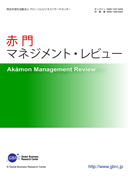
- Issue 5 Pages 139-
- Issue 4 Pages 105-
- Issue 3 Pages 89-
- Issue 2 Pages 73-
- Issue 1 Pages 1-
- |<
- <
- 1
- >
- >|
-
Fallacy of the “Electric-Vehicle-Only” ArgumentTakahiro Fujimoto2022Volume 21Issue 1 Pages 1-36
Published: February 25, 2022
Released on J-STAGE: February 25, 2022
Advance online publication: February 14, 2022JOURNAL FREE ACCESSIn this article, as a part of the global warming problem, we consider measures to reduce the amount of carbon dioxide (CO2) generated by automotive driving. We will pay a special attention to the possibility of rapid diffusion of battery electric vehicles (BEVs), which have attracted popular attention in recent years, investigating whether it can contribute to our overall purpose of reducing total CO2 emissions, as well as its limitations. For this purpose, we apply a rough-cut estimation model of CO2 emission from certain number of vehicles in operation with some simplified assumptions. First, for a given vehicle type, by applying the basic formula of “annual CO2 generation amount = number of vehicles in operation × average annual distance driven per vehicle (km/vehicle-year) × average CO2 generation amount per km (g/km),” the amount of CO2 generated from all automobiles in operation in Japan (about 80 million units), or about 180 million tons per year, is approximated. Next, we also roughly estimated how BEVs, hybrid vehicles (HEVs), and conventional internal combustion engine vehicles (ICEVs) may contribute to the overall goal of reducing annual CO2 emissions from the passenger cars in Japan (approximately 100 million tons from 60 million vehicles) by more than 20% (20 million tons) by 2030. Our forecast results will vary depending on the composition of the abovementioned three vehicle types in 2030, as well as their improvements in fuel efficiency, but in the 2020s, it is estimated that BEV’s contribution may be 5 to 7 million tons, HEVs 9 to 11 million tons, and ICEVs 6 to 7 million tons, by which the total reduction may reach 21 to 24 million tons. This calculation reveals that BEV’s contribution as long-term global warming countermeasures, including the period of the 2020s, is certainly significant, but BEV alone cannot not achieve our overall CO2 reduction target. Therefore, we conclude that the “BEV only theory” (the argument that relies only on the rapid diffusion of BEVs and denies all other means), which has been active in recent years internationally, is not logically correct, and that “all-out mobilization theory” that tries to mobilize all possible measures, including BEVs, HEVs and even advanced ICEVs, is more rational for achieving our overall goal. We also discuss the misunderstandings (e.g., confusion of objectives and means, time lags between vehicle production and population share increases, unilateral production target settings not based on effective demand, and disadvantages of current BEVs themselves) and the ploy aspects of automotive industry policies of each country (e.g., Europe, the United States, and China), explaining partly why such “fallacy of the BEV only theory” occurs.
View full abstractDownload PDF (2103K)
-
Hiroki KikuchiArticle type: research-article
2022Volume 21Issue 1 Pages 37-72
Published: February 25, 2022
Released on J-STAGE: February 25, 2022
Advance online publication: February 14, 2022JOURNAL FREE ACCESSThis paper examines how the perception of the limits of technology has been updated with case of the Tokaido Shinkansen. In considering the limits of technology, the technology frame is used for analysis. The limits of technology were classified into pure technologist limits and policy technologist limits. The pure technologist's limit is the recognition of the limits at the research stage, and the policy technologist's limit is the recognition at the stage of actual introduction into the operation. The factors that impose and renew the limits of each technology were identified.
View full abstractDownload PDF (3901K)
- |<
- <
- 1
- >
- >|